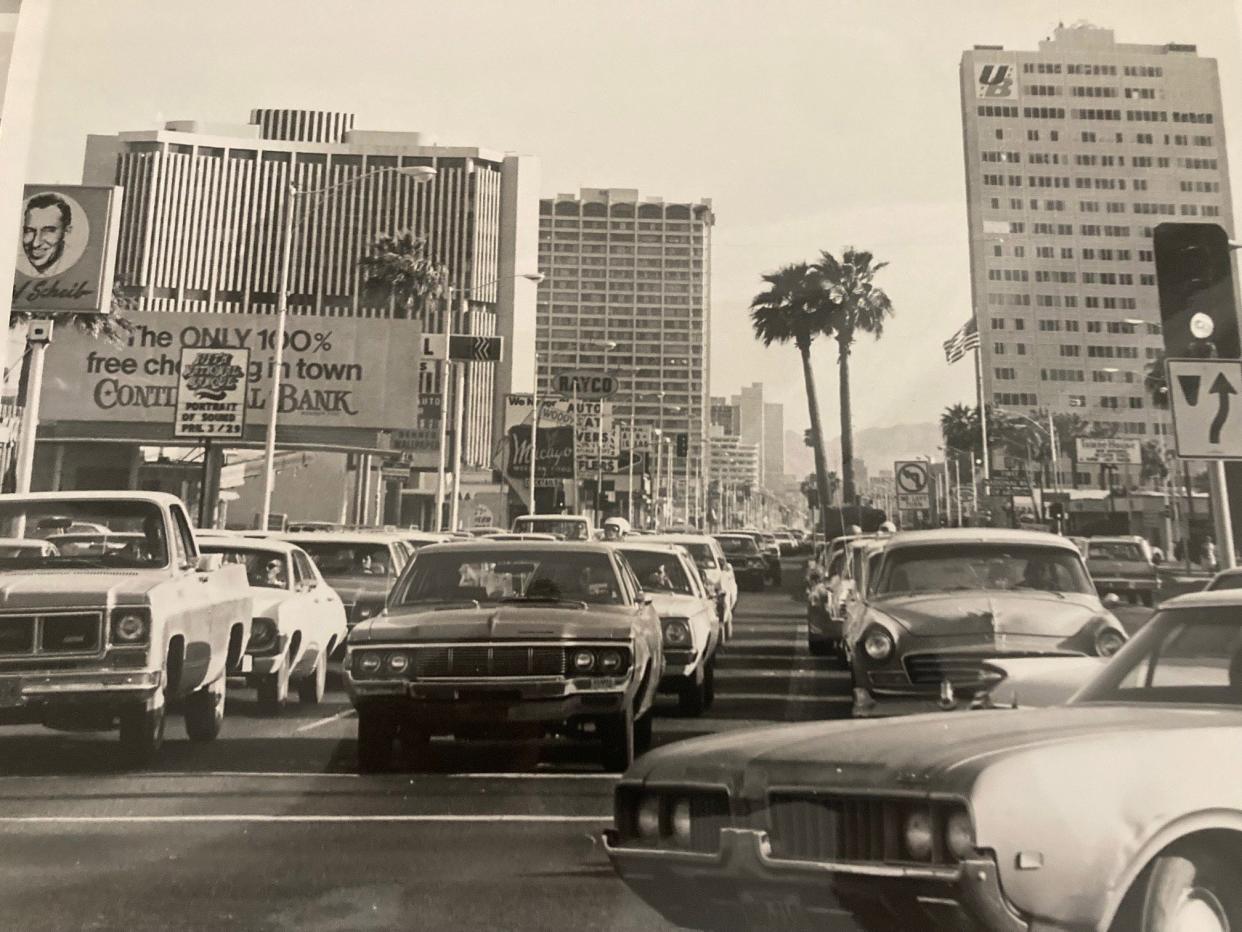Downtown Phoenix used to look very different. See what has changed in the past 70 years

Phoenix is no stranger to reinvention, having originally risen from the remains of a Native American civilization.
Originally a farming community, the city is now home to 1.7 million people, major sports and entertainment events, rapidly growing tech sectors and more.
As you wander down the light rail line or dine at a popular restaurant, you may wonder what downtown Phoenix looked like before it was revitalized and reinvented.
The Arizona Republic photographers have captured the look of life in metro Phoenix since the paper was founded in the late 1800s. Take a stroll down memory lane and see what downtown Phoenix's streets, buildings and people looked like in the 1950s and 1960s.
Here's what to know about the earliest days of Phoenix and what it was like in the 1950s and '60s.
When was Phoenix founded?
The future Valley of the Sun first drew Jack Swilling's eye in 1865. The Wickenburg resident saw potential for a successful farming operation due to the weather and good soil. He organized a canal company and began digging irrigation canals to water the Valley.
Phoenix had several early monikers, including Swilling's Mill, Helling Mill and Mill City. Other suggestions included Salina and Stonewall. Darrel Dupa suggested Phoenix as the city rose from the remains of an Indigenous civilization.
The town's early residents selected a townsite in 1870. It included what is now the downtown district, bounded on the north by Van Buren Street, on the south by Jackson Street, on the east by Seventh Street, and on the west by Seventh Avenue. At first, Phoenix was just one mile long, a half-mile wide, and had Washington Street as the main road.
In the 1870s, many essential buildings and businesses, including churches, a general store and schools. By the end of the 1880s, the city had a bank, ice factory, newspaper and 16 saloons.
The city was incorporated in 1881. At the first city council meeting, the city's seal was decided:
The first ordinance adopted was the one relating to the official seal of the city described as follows: "In the center a bird rising, and surrounding this the inscription Phoenix, Arizona - Incorporated February 25, 1881."
Metro Phoenix is growing rapidly: These photos show just how much has changed in 60 years
What was Phoenix like in the 1950s and '60s?
The prosperity the city saw during the '50s remains unmatched to this day. Phoenix was a farming town with an area of about 17.1 square miles and a population of 106,000, which placed it 99th among American cities.
By the end of the decade, the city's area had grown more than tenfold to 187.6 square miles, and its population had quadrupled to 439,000 people.
The city underwent sudden, rapid changes, and many people came to the Valley from around the country seeking a new lifestyle in Phoenix's stunning desert.
Notable events from the time include:
The Phoenix Art Museum opened on Central Avenue in downtown Phoenix in 1959.
Desegregation of city schools was completed in 1954 after a judge ruled segregation in Phoenix schools was unconstitutional. Segregation in city housing was banned in 1955.
Phoenix elected its first Hispanic city councilman, Adam Diaz, in 1952. Phoenix's first Asian councilman, Thomas Tang, was elected in 1960. In 1965, Morrison Warren became Phoenix's first Black city councilman.
According to the 1950 U.S. Census, the population of Phoenix was 106,818, making it the 99th-largest city in the United States.
Arizona Republic reporter Laura Daniella Sepulveda contributed to this article.
This article originally appeared on Arizona Republic: Downtown Phoenix history: See how the city has grown

